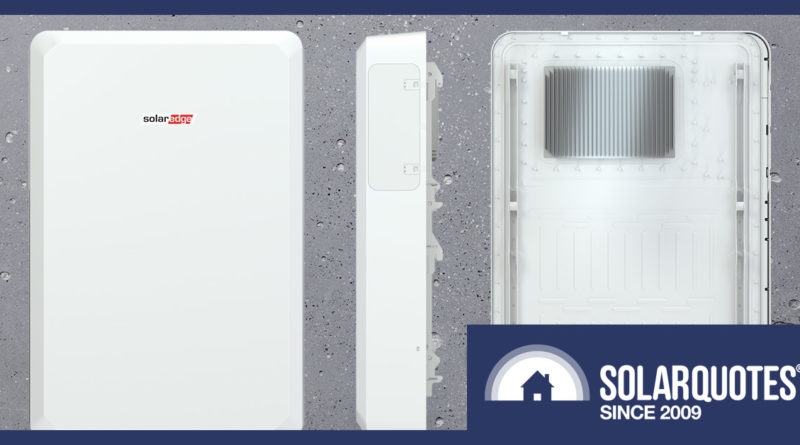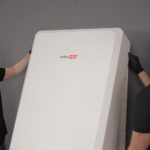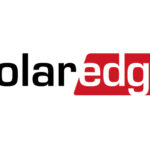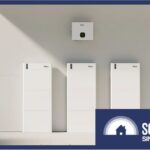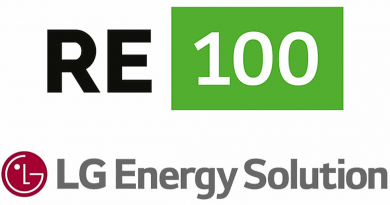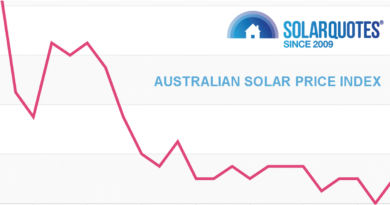The SolarEdge Home Battery — An Okay Battery For An Okay World
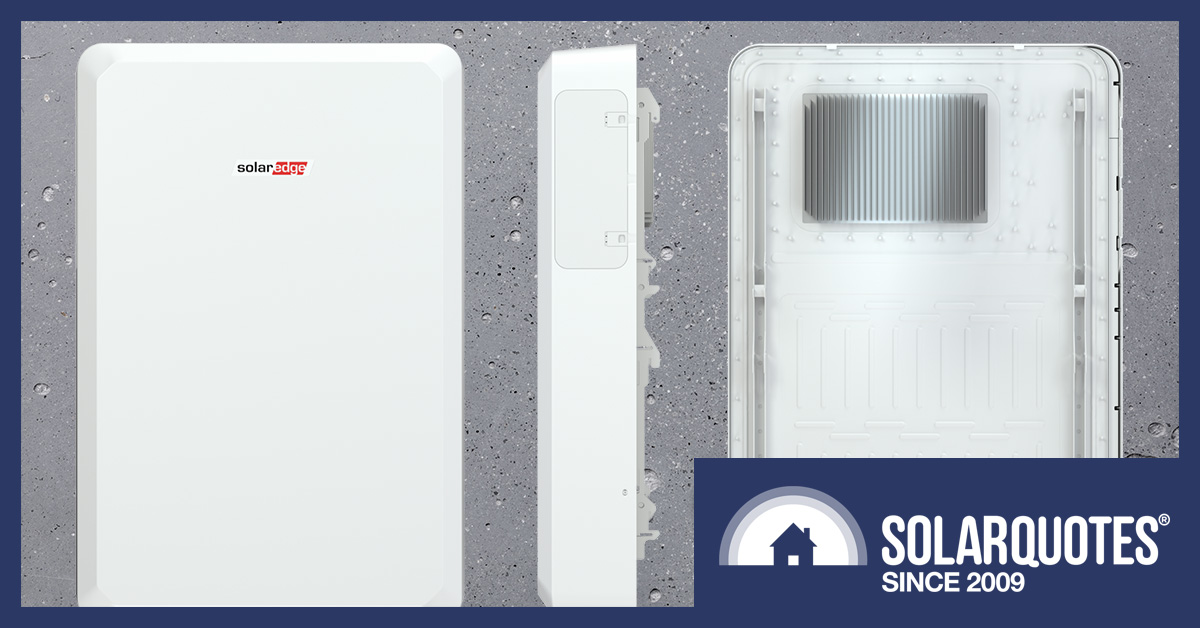
The SolarEdge Home Battery: 9.7 kWh, DC Coupled, Optional Backup
At 4 o’clock last Thursday, SolarEdge launched their home battery with an online event.
The next day, they held another launch for people who couldn’t make it to the first one. I attended both and paid 55% attention each time, so I want you to know I gave this article 110%.
Some important features of the SolarEdge Home Battery are:
- It has 9.7 kilowatt-hours of usable storage.
- It can provide 5 kilowatts of continuous power.
- It’s DC coupled.
- It 93.3% round trip efficiency, which is good.
- Back up costs extra.
- Single-phase homes can charge the battery from solar panels during a blackout with the backup option.
- Backup is only available with the SolarEdge Energy Hub inverter.
- It can be used without backup with the SolarEdge HD-Wave Genesis and HD-Wave EV inverters, and potentially the SolarEdge 3φ (three-phase) Residential Inverter in the future.
- Not recommended for off-grid use.
- Price isn’t clear but its installed cost without backup is likely to be under $10,000.
The battery can be added to existing solar systems with compatible SolarEdge inverters. SolarEdge says they’ll have a special offer that will allow SolarEdge owners without an Energy Hub inverter to upgrade to one at a reduced price if they buy the battery. This will also apply if people have an existing Solar Hub inverter and want to get a larger capacity one when they have the battery installed.
Because it’s DC Coupled, there’s no internal battery inverter. This can be a big advantage in areas where battery inverter capacity counts towards the total solar inverter capacity permitted by the local DNSP (electricity network).
Tech Specs
Here are some technical specs I pulled from its datasheet:
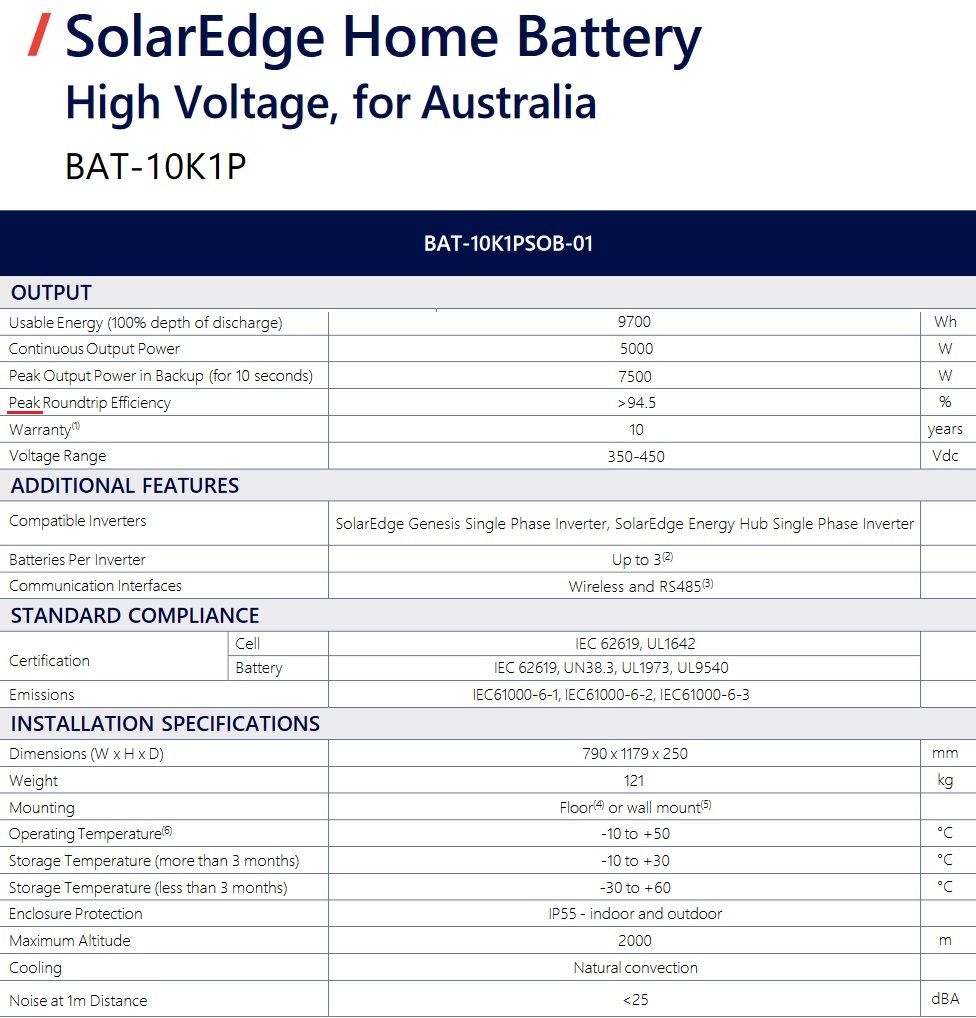
The SolarEdge Battery’s model number is BAT-10K1P, so presumably Bruce Wayne has a dozen of them.
It says its “Peak Roundtrip Efficiency” is greater than 94.5%. I put a red line under the word “Peak” because it’s not the same as the actual roundtrip efficiency, which is around 93.3%.
Energy & Power
It’s a 10 kilowatt-hour battery with 9.7 kilowatt-hours of usable storage. Most households average well under 10 kilowatt-hours consumption at night so, provided the solar system is large enough to regularly fully charge the battery, for a typical household it can potentially eliminate most grid electricity consumption.
Like most home battery systems with around 10 or more kilowatt-hours of storage, the SolarEdge Home Battery can provide a continuous 5 kilowatts of power. While this is enough to meet usual household needs, it’s not difficult to draw more than 5 kilowatts depending on what appliances are used. If your goal is to minimize grid electricity consumption it’s best to use high power draw devices such as electric hot water systems, clothes dryers, and pool pumps during the day when the solar system can directly contribute power.
Multiple Batteries
If 9.7 kilowatt-hours of energy storage isn’t enough, extra batteries can be installed. A Combiner Box will be required, which is an extra expense, and each one will allow up to three batteries to be connected to an inverter. If you’d rather use LG Chem batteries, the Combiner Box can be used with them.
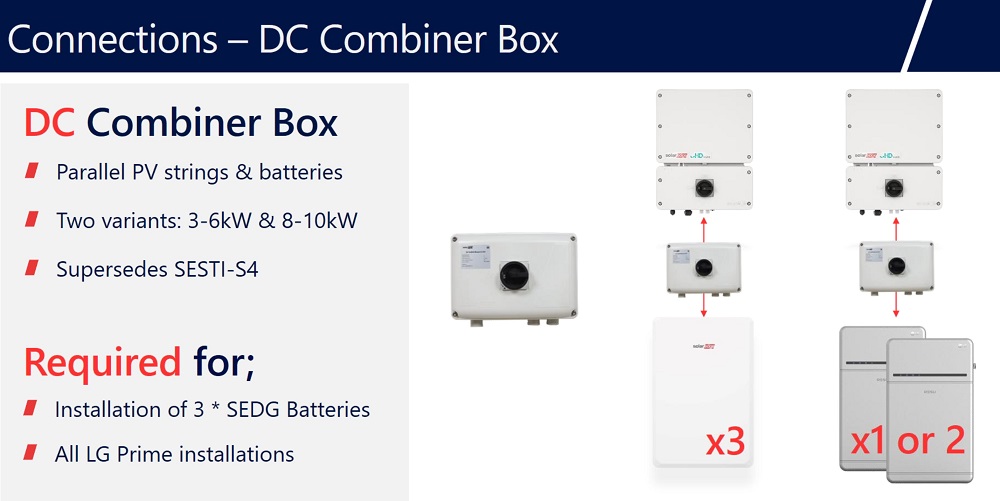

I don’t have any information on the cost of the Combiner Box.
Efficiency
Round trip efficiency is how much energy gets lost between charging and discharging the battery. SolarEdge says for their battery it’s 93.3%. That’s high for a home battery system and is possible because it is DC coupled. The Tesla Powerwall 2 is AC coupled, which gives it the advantage of working with any solar inverter, but it’s only around 88% efficient.
High efficiency is definitely good, but the most important thing for maximizing energy produced is to install as large a solar system as possible. A home will be much better off with one extra solar panel than an extra 5 percentage points of battery roundtrip efficiency.
Compatible Inverters
Backup power requires a SolarEdge Energy Hub single phase inverter and a Backup Box. The Backup Box is an additional expense.
The battery can be used without backup with the SolarEdge HD-Wave Genesis and HD-Wave EV single-phase inverters.
SolarEdge says it should also be possible to install their Home Battery with a SolarEdge 3φ (three-phase) Residential Inverter by the end of the year.
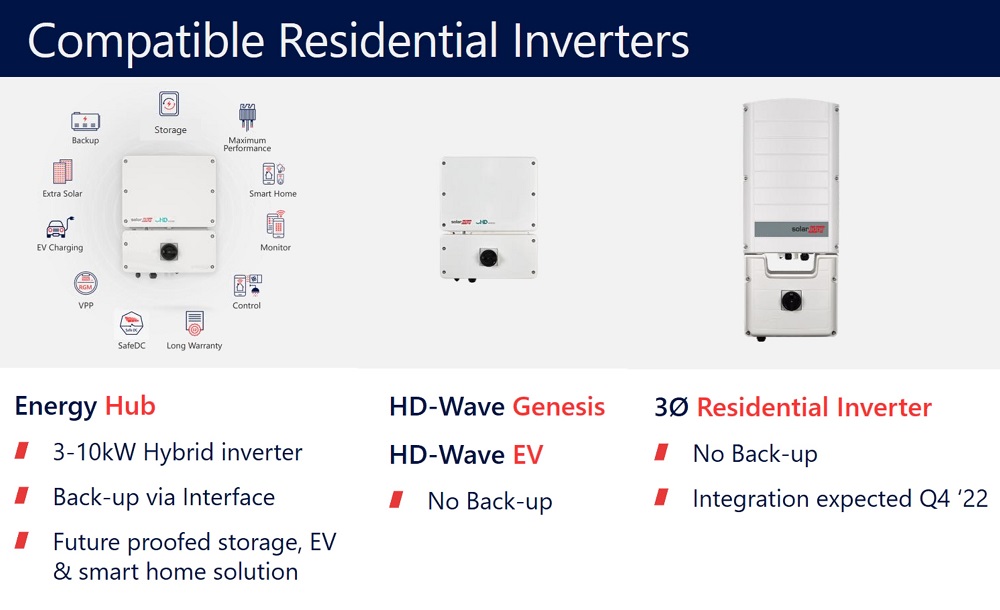

Operating Temperature
The battery’s operating temperature is from -10 to 50ºC. This is a good range for Australia because — at the moment — most towns and cities don’t go over 50ºC even in heatwaves.
But while this temperature range is good, there are there are places that are simply too hot for the SolarEdge battery. Its warranty will be void if installed where the ambient temperature1 exceeds 40 degrees for 5% or more of the warranty period. That’s around 18 days a year. This means you can’t install it Marble Bar in the shade or in a hot tin shed pretty much anywhere. At the moment, Alice Springs should be okay, but note the whole of Australia is getting hotter.
The warranty will also be void if the ambient temperature is under 0 degrees for 5% or more of the warranty period, but outside of the Snowy mountains, this isn’t likely to be a problem in Australia.
Unlike most battery systems, it can be stored for up to a year before use. Its temperature has to be below 30ºC for nine of those months, but being stored between 30 and 60 degrees for 3 months is okay. This makes stock management a lot easier for installers.
Noise
The battery has no active cooling system and relies on natural convection. This just means natural air movement keeps it cool. Because there’s no active cooling, there’s no fan to make noise. SolarEdge says at one metre its noise emission is under 25 decibels. That’s whisper quiet.
Size & Weight
The battery weighs 121 kg and is 118cm high, 79cm across and 25cm deep. This picture gives an idea of its size:
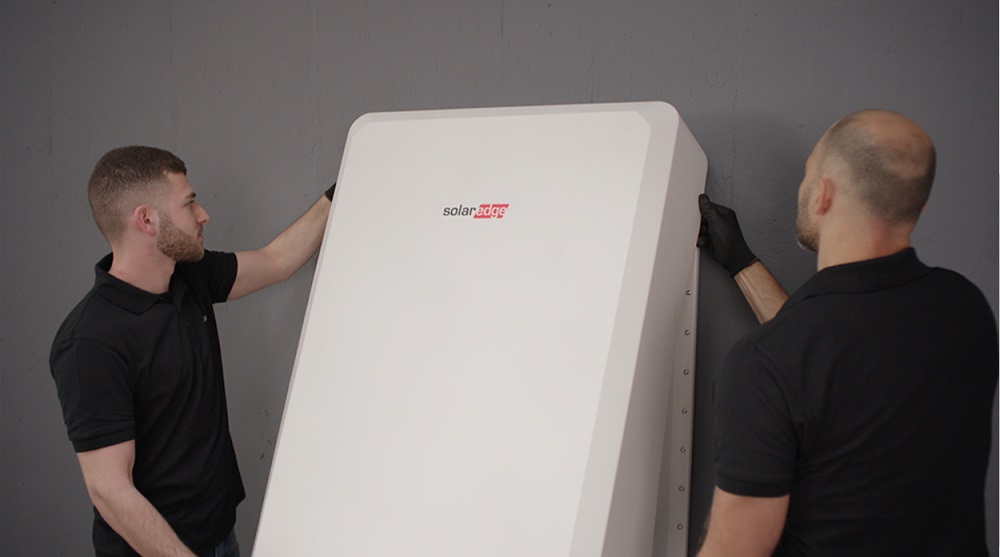
These installers are just putting the plastic cover on. They aren’t casually lifting 121 kilograms. Image: SolarEdge
Note that cabling and the backup box will take up additional space. This is often left out of promotional material that frequently shows batteries installed without the stuff that actually lets it work or, worse, shows it floating in space with “god rays” coming off it:
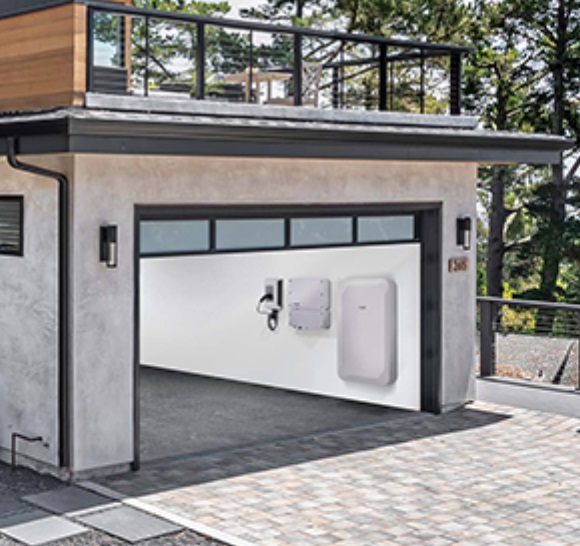
No cabling or backup box is visible in this promotional still. While it’s not impossible to hide cabling, it can significantly add to the cost of installation.
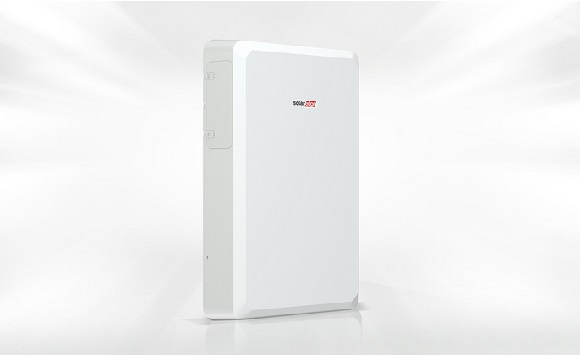
The rays coming off this white monolith indicate it must be the god of all batteries.
Installation
The battery is IP55 rated. This means it is protected from dust and water, allowing it to be installed outside:

While it says it’s protected from jets of water, I really recommend against hosing down your home battery otherwise, you may end up meeting José2 (Image: B&R Enclosures).
While it can be installed outside, SolarEdge makes it very clear it should be installed out of direct sunlight whenever possible. This is because heat is bad for batteries.
The battery is normally wall-mounted, but can be ground-mounted. It comes with a wall mount, but ground installation will require the purchase of a separate floor mount:
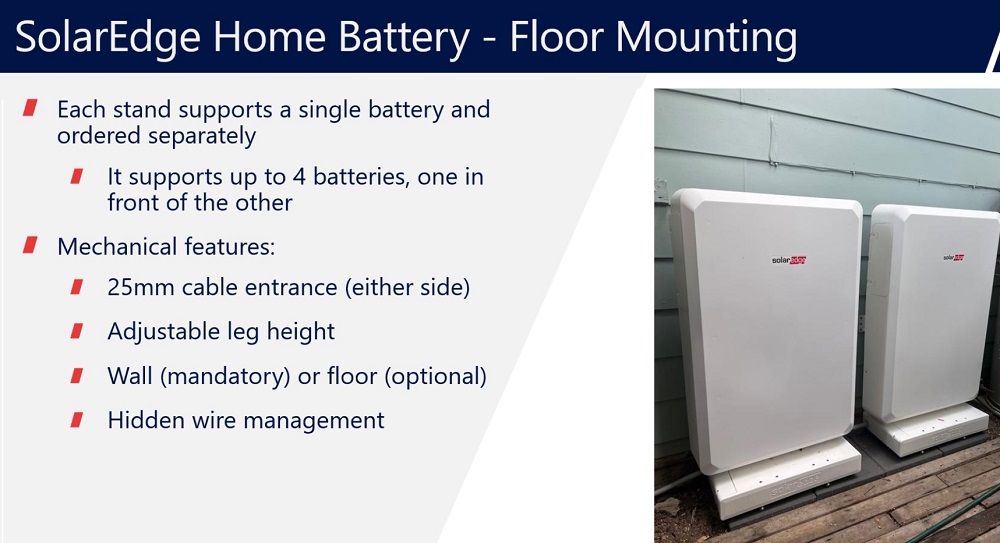
SolarEdge’s description of the floor mount is a bit confusing. One ground mount is required per battery. You can’t put four on one. Also, it’s not mandatory to mount it on the wall, that just means it comes with a wall-mount but you have to shell out for a floor mount. (I hope those batteries aren’t floor-mounted in direct sunlight.)
All communication links can be wireless, which can make installation easier. But because sending electricity through the air is both scary and dangerous, electrical cabling will still be required.
To allow for adequate cooling, the SolarEdge Home Battery requires a minimum of 20 cm clearance all around. This includes underneath when wall mounted. In addition to this, in Australia battery installations now require 60 cm clearance to the sides and 90 cm above3 and not be located inside “habitable” areas of a home.
Backup
When a blackout occurs the optional Blackout Box takes around three seconds to switch to battery power.
In backup mode, the SolarEdge Home Battery can provide up to 5 kilowatts of power, the same as on-grid operation. If you have two batteries and a 10 kilowatt Energy Hub inverter, they can provide up to 10 kilowatts of backup power.
The backup box can support up to three SolarEdge Energy Hub inverters, but each backup box can only supply backup power to a single phase.
By the end of the year, SolarEdge says Backup Box will be able to support a generator of up to 17 kilowatts.
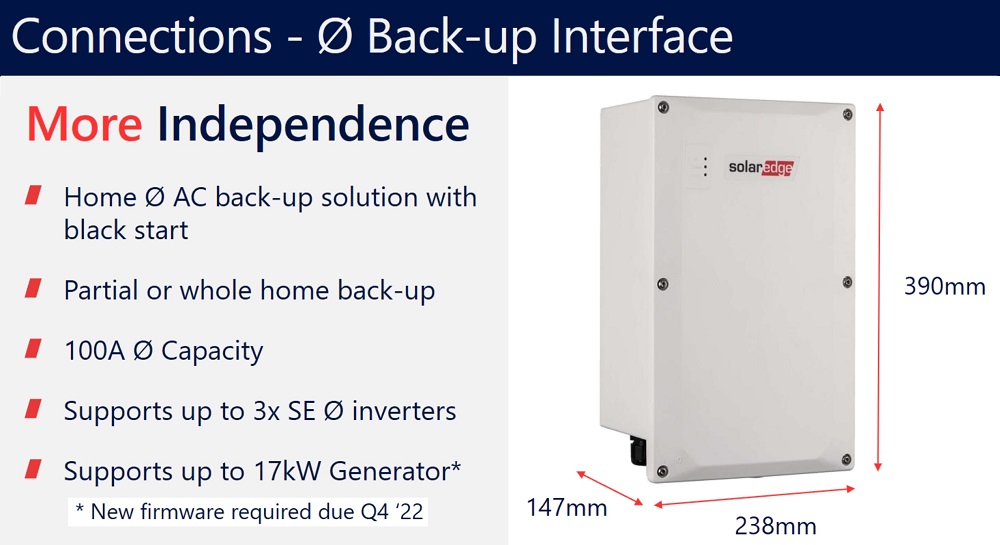
In this graph, SolarEdge refers to it as a φ (single-phase) back-up interface, but at the launch SolarEdge just called it the Backup Box.
Like most home battery systems, it can be set to reserve some energy so you can make sure it won’t be completely flat if a blackout occurs.
The Backup Box will allow the battery to charge from solar panels during a blackout if the home has single-phase power. Even if the battery is completely drained at night during a blackout, it will still retain enough power to automatically switch on and start charging when the sun rises. This is called black start capability.
No information was given on the price of the backup box. I suspect it will add over $1,500 to the cost of installation.
Not Recommended For Off-Grid Use
The SolarEdge battery is not recommended for off-grid use. This is because it doesn’t have surge protection, which makes it difficult to cope with the inrush of current that often occurs when an electric motor starts. The sudden power draw can cause the battery system to trip and shut down. While the motors in modern fridges and freezers are generally not a problem, larger electric motors in air conditioners, washing machines, and clothes dryers may cause difficulties.
Warranty
The SolarEdge Home Battery warranty4 is good compared to most home battery systems. It’s 10 years with unlimited cycles and promises it will have at least 70% of its original capacity at the end of 10 years. Because there’s no limit to the number of cycles, the warranty will last a full decade. It also makes the battery a good choice if you know it’s likely to be used at high capacity.
The warranty says the battery cannot be removed from its original location, but the warranty can be transferred from the original purchaser to another person, provided the battery stays where it is.
I don’t have information on the warranty for the Backup Box or other components such as the connector box. While I hope their warranty length isn’t under 10 years, it would be worth checking if you’re considering buying one.
Battery Chemistry
The battery has NMC lithium battery cells. The NMC stands for Nickel Manganese Cobalt oxide. All else equal, this battery chemistry isn’t as safe as more commonly used lithium iron phosphate batteries — also known as lithium ferro phosphate or LiFePO4 if you prefer letters and numbers — but battery systems aren’t built on the basis of all else being equal. No one just throws battery cells in a box and calls it a day. (If anyone does, you definitely shouldn’t buy that battery.) Battery safety depends on what kind of care and precautions have been taken with the entire system, and I strongly suspect SolarEdge has paid close attention to this.
Built-In Fire Extinguisher
The battery has temperature sensors and if it gets too hot it will send messages to SolarEdge and the homeowner saying there’s a problem. If the temperature rises too high the built-in fire extinguisher will activate and hopefully stop any combustion that may be occurring.
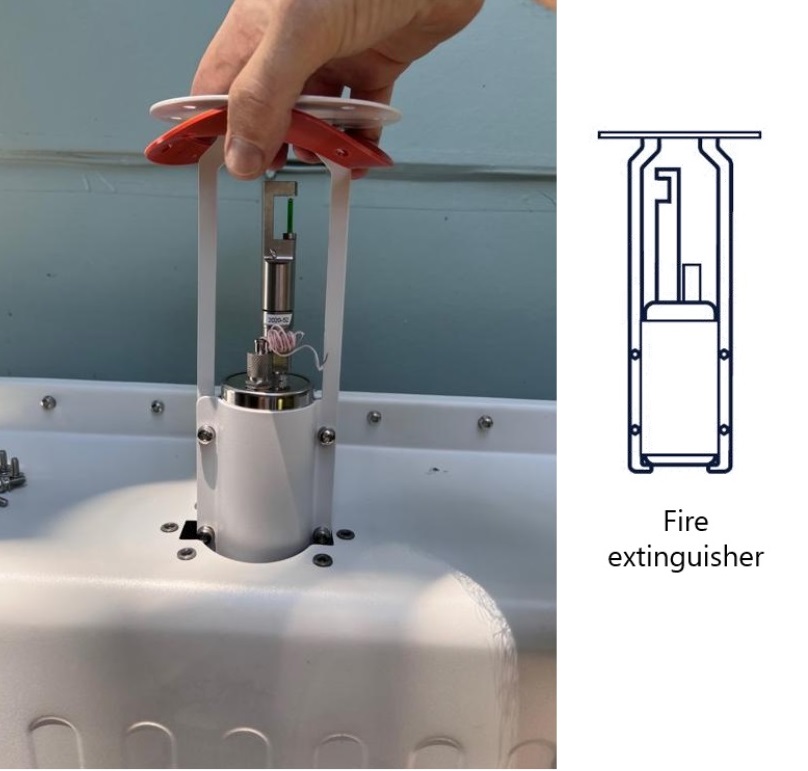
Don’t worry, the installer will slot the fire extinguisher into the hole. You don’t have to stand there holding it.
It’s a potassium nitrate extinguisher that doesn’t use electronic temperature sensors and has a simple heat activated mechanism. Potassium nitrate is sometimes used as a food additive and isn’t very dangerous. I also suspect it will mostly be contained within the battery case if activated.
If the battery is overheating because there is a fault in the Battery Management System (BMS), the extinguisher will take it out and stop whatever it’s doing wrong.
VPPs
SolarEdge says households with SolarEdge Home Batteries can join Virtual Power Plants (VPPs) and they are currently in discussions with a variety of providers. Because the warranty has unlimited cycles, it will still last a full 10 years even if joining a VPP greatly increases battery use.
Battery Subsidies
SolarEdge said the battery should be eligible for state battery subsidies in Victoria and South Australia. Once accepted in these states it’s likely to be accepted for any other state subsidies, such as in NSW.
Inverter Upgrades
SolarEdge is offering a special deal that will allow people with existing SolarEdge residential inverters to upgrade to an Energy Hub inverter at a reduced cost if they buy an the battery. This will also apply to people who currently have an Energy Hub but want to upgrade to a larger one. These will be new inverters with fresh warranties. Just how good the deals will be isn’t clear, but it will operate at the installer level and it’s up to them how they’ll pass it on to customers.
DC Coupling & Inverter Limits
A DC-coupled battery, like the SolarEdge Home Battery, shares the solar inverter with the batteries. An AC coupled battery, such as the Tesla Powerwall 2, has its own built-in battery inverter.
Depending on where you are, the battery inverter in an AC coupled battery system can count towards the total amount of solar inverter capacity you are allowed to install, which can be a major drawback. A DC-coupled inverter avoids this problem but requires the battery to be compatible with the solar inverter. This is why the SolarEdge Home Battery only works with specific SolarEdge inverters.
Additional Solar Panels
Generally, on-grid solar systems without batteries can only have a panel capacity that is up to 133% of the inverter capacity. But with a suitable solar inverter and DC coupled battery it’s possible to exceed this solar panel capacity limit. Installing a solar system with a SolarEdge Home Battery, or adding one to a suitable existing system can allow up to an extra 5 kilowatts of panel capacity to be added. If two batteries are installed, up to 10 kilowatts of extra panel capacity can be installed. STCs, which lower the cost of rooftop solar, can be claimed for the additional panel capacity.
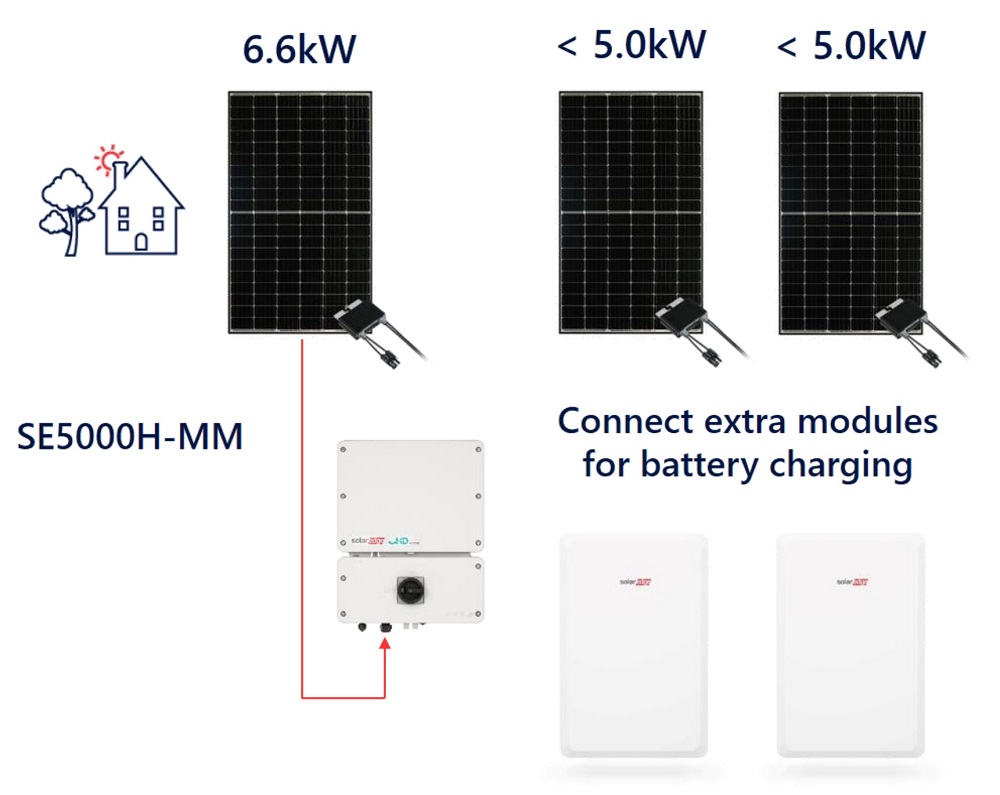

This additional panel capacity can provide much greater savings on electricity bills and provide a better return on money invested than the battery.
If the solar panels produce more energy than the inverter capacity then, instead of being wasted as would be the case with an AC coupled battery, the surplus energy can be used to charge batteries if they’re not already at full capacity.
SolarEdge Home Battery Cost
SolarEdge did not reveal the price of their battery or Backup Box. They also didn’t say how much the floor mount or the combiner box for multiple batteries would cost. But a secret squirrel told me to expect to pay under $10,000 for one installed without backup. (If I’m wrong about this, let me know and secret squirrel will be in big trouble.)
Economics
Given its secret squirrel price, the SolarEdge Home Battery is unlikely to pay for itself through savings on electricity bills alone. But if your electricity use is high, you find a suitable VPP and get a state battery subsidy, it’s possible you be able to come out ahead — depending on electricity prices and how long the battery lasts beyond its warranty.
But there are plenty of reasons to get a battery other than raw financial returns. In which case, for Solar Edge system owners this looks like a well thought out, safe, quiet battery at about the same price as most of its competitors – about $1000 per kWh installed, or more with backup.
Footnotes
- Ambient temperature just means air temperature, but my guess is if the battery gets hot because it’s in sunlight they’ll count that as well.
- Yes, this joke depends on knowing Spanish pronunciation. It’s called niche humour.
- Items associated with the battery, such as inverters and backup boxes, are not included in this 60-90 cm of clearance.
- The warranty document refers to the SolarEdge Home Battery as the SolarEdge Energy Bank. They’ll probably change that soon, as they seem to have gone off that name in Australia.
Original Source: https://www.solarquotes.com.au/blog/solaredge-home-battery-review/




